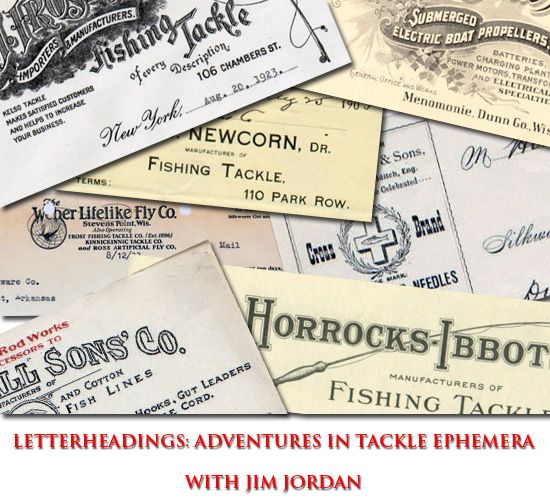
Most Americans would not look back on 1926 as a year filled with spectacular headlines. A general strike in Britain brought that country to a temporary standstill, Robert Goddard launched the first liquid rocket, U. S. Marines landed in Nicaragua to put down a revolt and Chiang Kai-shek ascended to leadership of China's Revolutionary Party. None of which had much of an impact on the average American's employment opportunities or recreation hours. However, an article buried in the August 1926 edition of the Sporting Goods Dealer on Page 164 did describe a monumental sea change in the production of U. S. fishing tackle. This article, echoing a report by the Department of Commerce, confirmed that the U. S. tackle industry was now the largest in the world. And this fact would very much have an impact on the average American family.
"Where a few years ago this country imported most of its tackle from Great Britain and Norway, it now exports more than $300,000 worth of this merchandise annually. Great Britain is now the second largest manufacturer of fishing tackle, with Norway third. Ninety-five per cent of the domestic demand is supplied by home industry."
Harry C. Kaufman as president of Pequea Works was in the thick of a considerable scrum with other U. S. manufacturers to buy up raw materials. What he could not buy domestically he bought overseas. There was silk fishing line from D. Nagata of Kobe, Japan, sailing on the Toyama Maru to Seattle and thence by rail to Strasburg. Kaufman purchased Japanese gut line and leader from Amita-Shoten of Nagoya. From England he purchased porcupine quills for bobbers. And, of course, ever increasing orders for hooks from O. Mustad & Son of Christiania, Norway to keep his huge production line of snelled hooks moving at a frenzied pace. When supplies were undependable, priorities for unfilled orders had to be established. Pequea Works placed a priority on suppling goods for their largest customers (i.e. E.K. Tryon, New York Sporting Goods and Horrocks-Ibbotson) as well as orders for their oldest customers (i.e. Simmons Hrdwre, Suplee Hrdwre, Farewell, Ozmond and Kirk Co., and Enterprise Mfg. Co.). Other customers would just have to wait, regardless of who ordered first or what promises had been made.
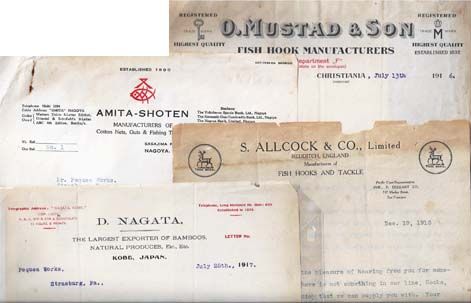
Tackle producers like Pequea were growing larger every year, producing more, offering more varied product choices and hiring more workers (including a large percentage of women). In select cities the average American could find work in the tackle industry if he or she had appropriate skills or the willingness to learn new ones. Even better, they could buy reasonably priced tackle of every description, either through catalog orders in rural areas or at a wide variety of local shops in urban areas. In the 1930's Pequea tackle was sold by many counter-intuitive businesses such as gas stations, drug stores, tobacco shops, radio and tire stores, to name just a few. And Pequea products were well represented in these corner mom and pop stores through out the pre-WWII period.
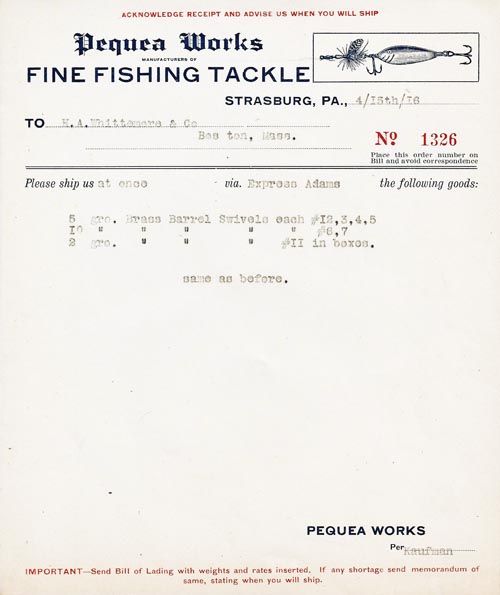
Harry Kaufman checked into the Hotel Pennsylvania in New York City with plenty of time to spare. The ninth annual meeting of the Associated Fishing Tackle Manufacturers was to occur from December 7-9th. Representatives of all the leading members of the U.S. tackle industry were to discuss, among other items the allocation of materials for the manufacturing process. On Sunday morning, December 7, 1941, radios began blaring non-stop. The Japanese had attacked our bases in Hawaii and other Pacific locations. The men who had gathered to discuss the production of tackle were not stupid. They knew that their industry would be of little importance compared to the need for the production of war goods. They quickly changed their thinking, their factories and their lives to accommodate this new reality.
The eighteen month period following the end of WWII was the apogee of the business life of Pequea Works. In 1945 the company employed 8 men and 47 women for a total of 55 workers. The next year, 1946 they had 12 men and 239 women for a total of 251. They would never equal this level of manpower or production again. By 1950 they were down to 88 souls including 10 men and 78 women.
Not only was foreign competition for the American tackle dollar fierce, competition for raw materials was equally difficult. These difficulties were compounded when on June 24th 1950, North Korea invaded South Korea. U.S. Government war related contracts with Pequea added another level of difficulty. An extracted paragraph from a letter dated 3 May 1951 from Pequea to E.K. Tryon is quoted below:
"There are several reasons beyond our control why shipments have been rather slow. We have had several unsolicited orders with D. O. priorities thrust upon us and we have experienced an abnormal amount of pregnancy among our female help. Please be assured that the Pequea Management was not directly implicated in either of the above."
The most critical factor in the ill fortune of Pequea was the increasing absence of its President and founder. By 1949 Harry Kaufman was visibly slowing down. By 1950 he was no longer taking an active role in the business of his company. Although he was only 64, his health was quickly failing and his place at the helm of Pequea was turned over to his Nephew, Dale Kaufman.
On Monday, April 14, 1952, at the age of 66 Harry Clay Kaufman passed away. The Associated Fishing Manufacturers, of which Harry had been a member for many years on the Executive Committee, passed the following resolution:
"Whereas, Almighty God in His Infinite Wisdom has called our dear friend and former associate, Harry Kaufman, to his eternal resting place; be it therefore RESOLVED, That we the members of The Associated Fishing Tackle Manufacturers assembled in Milwaukee do hereby express in behalf of the fishing tackle industry our heartfelt sorrow at his passing and unite in expressing to his family and Pequea Works, Inc., our profound sympathy in their great loss, with the sincere hope that some measure of comfort may be theirs in the sure knowledge that his years of unselfish service to his associates and the industry will ever stand as a source of inspiration….."

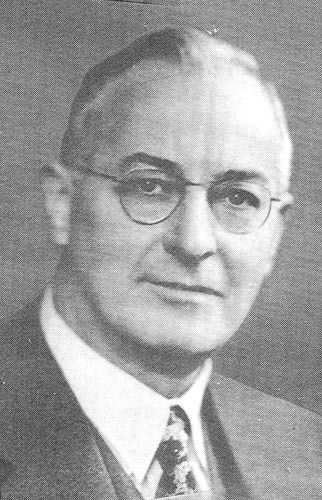
The Kaufman family was unable to maintain the business and it was sold to Donald Z. Esbenshade in July 1954. After a long and colorful history the company was finally dissolved and sold at auction in 1986. The old factory building was converted into apartments.
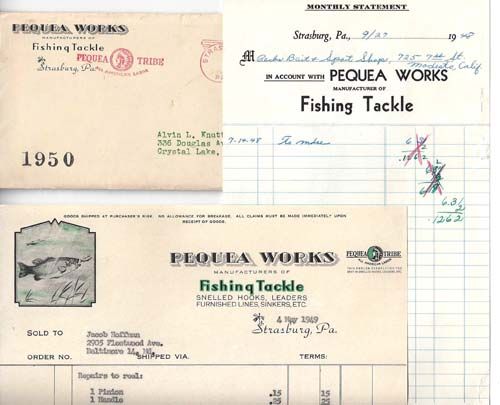
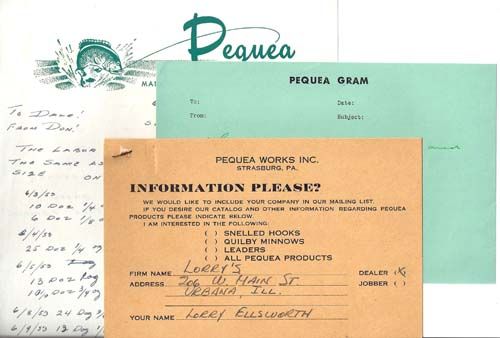
-- J.K. Garrett & L.P. Brooks
No comments:
Post a Comment